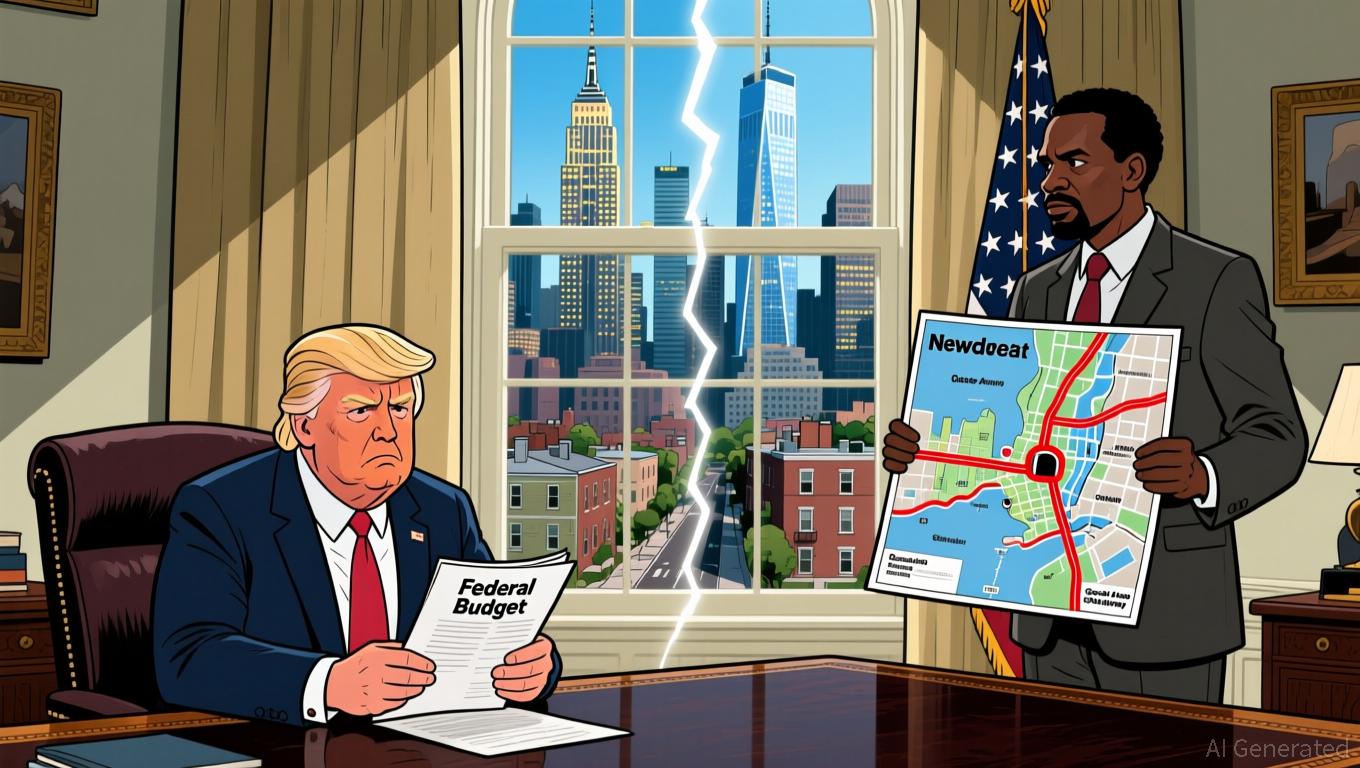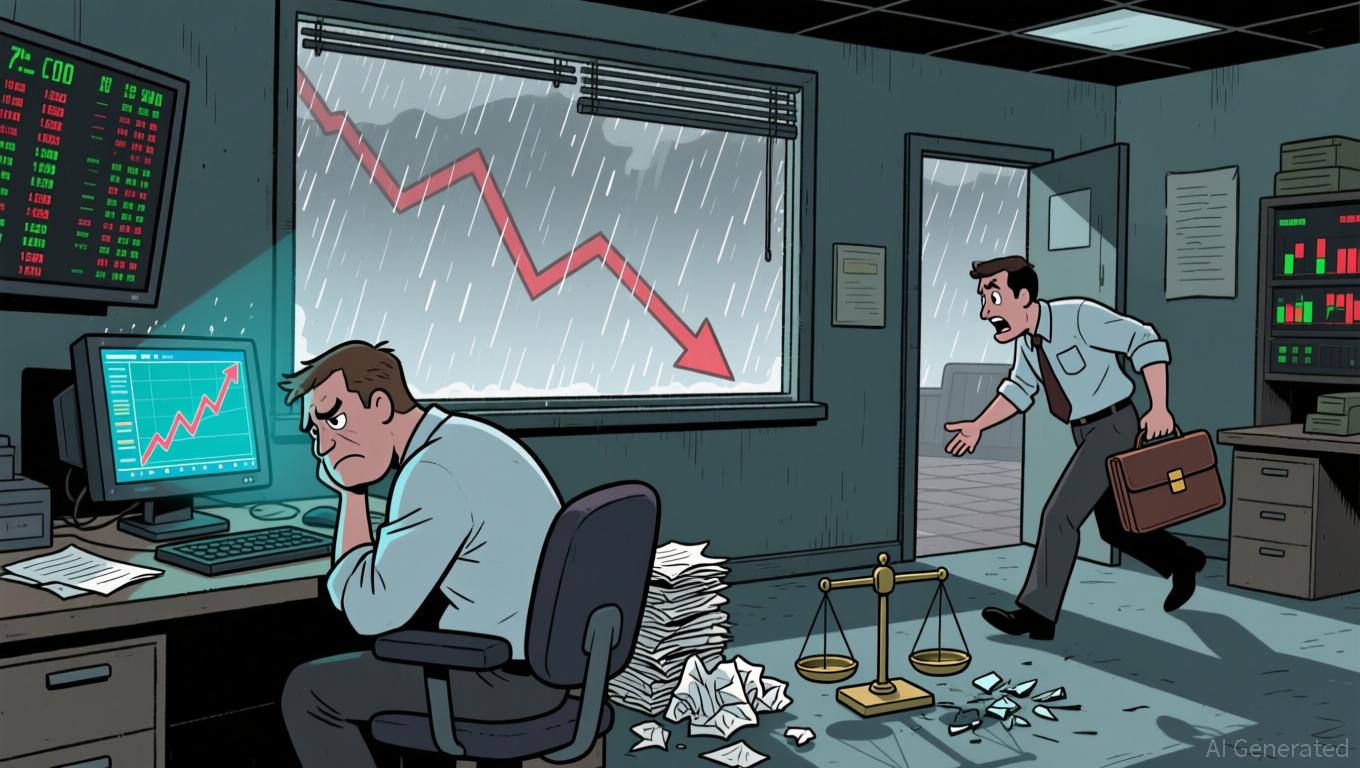Widening Wealth Gap and Employment Concerns Drive Consumer Confidence to Record Lows
- US consumer confidence fell to near-record lows in November (index 51), driven by inflation fears and worsening personal finances, per University of Michigan data. - Wealth disparities deepened as affluent consumers maintained spending power while non-stockholders faced deteriorating financial conditions. - Job insecurity spiked to 2020 levels, with rising unemployment claims and pessimism about re-employment prospects exacerbating economic anxiety. - Market volatility reflected broader uncertainty, exem
In November, US consumer sentiment dropped sharply, reaching a near-record low of 51, down from 53.6 in October,

The survey further revealed a significant gap between higher-income households and those earning less. While wealthier Americans seem able to keep spending, people without stock investments are experiencing worsening financial situations, highlighting vulnerabilities that broader economic data may overlook
Elsewhere, economic uncertainty has affected unrelated industries. Mawson Infrastructure Group Inc. (NASDAQ:MIGI)
The University of Michigan’s analysis also found that consumers became slightly more negative about short-term economic prospects, even after the end of the longest government shutdown in US history. Conditions for making large purchases hit all-time lows, signaling that households remain cautious about spending. These patterns indicate that, despite some relief from inflation, concerns about the cost of living and job security continue to undermine consumer confidence.
Disclaimer: The content of this article solely reflects the author's opinion and does not represent the platform in any capacity. This article is not intended to serve as a reference for making investment decisions.
You may also like
Trump and Mamdani’s Bet on Affordability: Uniting Opposing Ideologies
- Trump and Mamdani's Nov. 21 meeting highlights clashing ideologies on affordability and governance, with New York's $1.286T economy at stake. - Both leaders share focus on cost-of-living crises but differ sharply on solutions, with Trump threatening federal funding cuts and Mamdani advocating rent freezes. - Experts see the dialogue as critical for redefining strained city-federal relations, emphasizing urban centers' role as economic engines. - Mamdani's corporate tax proposals clash with Trump's deregu

Bitcoin News Update: Navigating Crypto’s Balancing Act to Steer Clear of 2018’s Downturn as Global Economic Conditions Evolve
- Crypto markets avoid 2018-style collapse as macro-driven cycles and reduced speculation prolong volatility, per Lyn Alden. - Fed policy uncertainty and leveraged ETF launches highlight risks and innovations amid $2.2B crypto outflows and $914M liquidations. - MSTR's BTC gains and Gunden's $1.3B sell-off reflect divergent investor strategies, while Munari's Solana project targets long-term adoption. - Analysts split between 65-70% Bitcoin retracement forecasts and prolonged cycles driven by institutional

Bitcoin Updates: U.S. Suggests Using Bitcoin for Tax Payments to Dominate Worldwide Digital Economy
- U.S. Rep. Warren Davidson introduced the "Bitcoin for America Act," allowing Americans to pay federal taxes in Bitcoin and creating a Strategic Bitcoin Reserve. - The bill cites Bitcoin's fixed supply and long-term appreciation potential, aligning with corporate strategies like Michael Saylor's $48.37B BTC holdings. - It aims to counter global competition from China/Russia while balancing risks like BTC's 30% price drop from its August peak. - Proponents argue voluntary BTC tax contributions could build

XRP News Today: XRP Faces Uncertainty: Bearish Trends Clash with Optimism from ETF Prospects
- XRP faces critical juncture at $1.96 as bearish technical patterns clash with institutional optimism from new ETFs. - Descending triangle breakdown and RSI divergence signal potential 25% drop to $1.55, contradicting ChartNerd's reversal prediction. - Bitwise XRP ETF's $25.7M debut volume injects liquidity but risks accelerating forced selling from 41.5% of supply at a loss. - Analysts debate ETF-driven bullish potential vs. structural risks, with $2.20 support zone and $1.25 price floor as key battlegro
